Hot Chips 2018: NVIDIA Xavier SoC Live Blog (5pm PT, Midnight UTC)
by Ian Cutress on August 20, 2018 7:55 PM EST- Posted in
- SoCs
- Hot Chips
- Trade Shows
- NVIDIA
- Live Blog
- Xavier
- Automotive
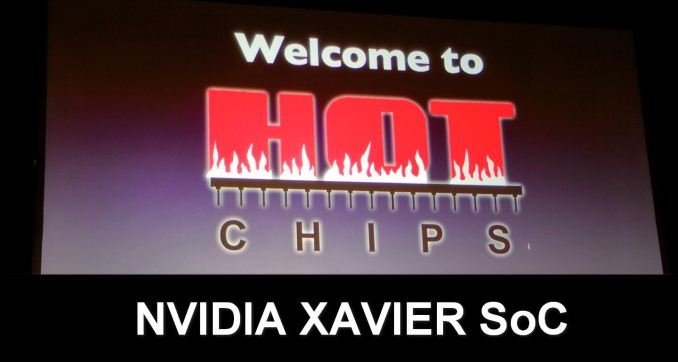
07:55PM EDT - NVIDIA has a couple of talks during Hot Chips, with this first one going into the Xavier SoC.
07:57PM EDT - Leading architect of Xavier
07:57PM EDT - Compute has become more accessible
07:57PM EDT - What do we need in an autonomous machine chip
07:57PM EDT - Need 10s of Tera-Ops of CV and compute perf
07:58PM EDT - Goal to build a chip to fit in these markets and fit in the power targets
07:58PM EDT - 8 custom Carmel cores, 512 CUDA Volta cores
07:59PM EDT - fixed function accelerators: Deep Learning Accelerator (11.4 DL int8 TOPS)
07:59PM EDT - PVA (Programmable Vision Accelerator) 7-slot VLIW, 1.7 TOPs
07:59PM EDT - ISP - needs to be native HDR
08:00PM EDT - rearchitected from Tegra
08:00PM EDT - higher precision math for HDR
08:00PM EDT - DLA and PVA are for certain compute aspects which can appear
08:00PM EDT - other multimedia accelerators (stereo, optical flow)
08:00PM EDT - supports high-speed IO
08:00PM EDT - ASIL-C compliant, ISO26262
08:01PM EDT - Comes through dev processes
08:01PM EDT - TSMC 12 FFN
08:01PM EDT - ECC and parity thoughout RAMs, some level of redundancy
08:01PM EDT - Units optimized for energy efficiency
08:02PM EDT - Optimized differently than desktop GPU
08:02PM EDT - Design started 4 years ago
08:02PM EDT - 9B transistors, 350 mm2
08:02PM EDT - 8 Carmel cores
08:03PM EDT - Speedup vs Parker
08:03PM EDT - 2.0x on SpecInt 2k6
08:04PM EDT - Volta optimized for inference
08:04PM EDT - Tensor cores, fp16, int8 at 2x of fp16
08:04PM EDT - 128KB L1 per SM, 512KB of shared L2
08:05PM EDT - Two DLAs in the SoC
08:05PM EDT - Optimized for perf/mm and power
08:05PM EDT - More in talk tomorrow
08:05PM EDT - NVDLA
08:05PM EDT - PVA uses Cortex-R5
08:06PM EDT - Each PVA (two in chip) has a Cortex R5, two Vector Pipes, each pipe has its own DMA and own memory
08:06PM EDT - 7 wide VLIW in each PVA
08:06PM EDT - each Vector Unit can do 32 x 8-bit or 8 x 32-bit vector math
08:07PM EDT - Vector unit has its own I-cache and local data
08:07PM EDT - secret sauce for hardware looping and address generation
08:07PM EDT - Works on tiles of memory
08:07PM EDT - DMA works on addresses to keep it fed
08:08PM EDT - Lots of pipes to remove workload from the GPU at lower power
08:08PM EDT - Xavier has 25x AI perf over Parker
08:08PM EDT - due to DLA support
08:09PM EDT - lens distortion correction hardware
08:09PM EDT - 256-bit LPDDR4X
08:09PM EDT - (he said LPDDR5 first... so next gen?)
08:10PM EDT - Xavier has 20 GB/s NVLink, multiple PCIe Gen 4.0 controllers
08:10PM EDT - 3 x USB 3.1 ports (says 10 GT/s, not 10 Gbps ?)
08:10PM EDT - supports 4x displays, HBR3, HDMI 2.0
08:11PM EDT - Cameras - 16 CSI lanes, 40 Gbps in DPHY 1.2, 109 Gbps in CPHY 1.1
08:12PM EDT - Autonomous vehicles use case
08:12PM EDT - In Parker, most things mapped to the GPU
08:13PM EDT - In Xavier, lots of offload
08:14PM EDT - Almost all segments can be accelerated by PVA
08:14PM EDT - DLA in perception
08:16PM EDT - Xavier scales from Jetson up to Pegasus
08:16PM EDT - Time for Q&A
08:17PM EDT - Q: What protection on the memory bus? A: ECC implemented through the bus, no extra bits
08:17PM EDT - That's a wrap. Next talk is about Microsoft Azure Sphere: https://www.anandtech.com/show/13246


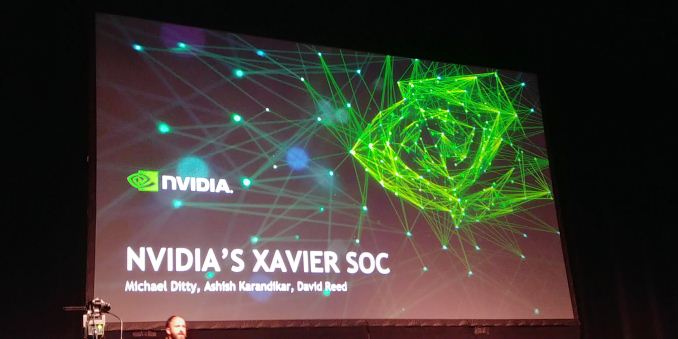
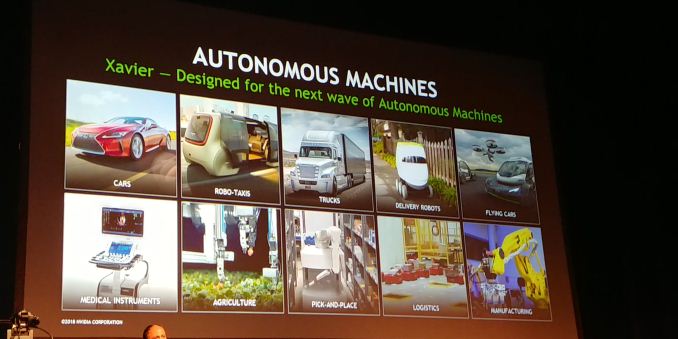
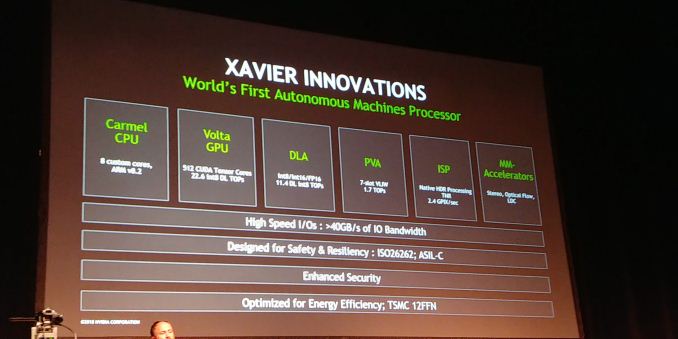
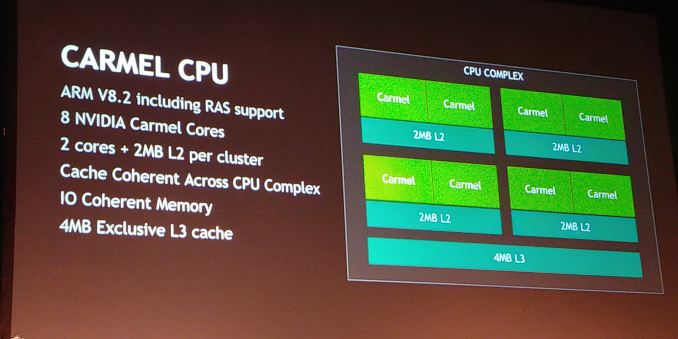
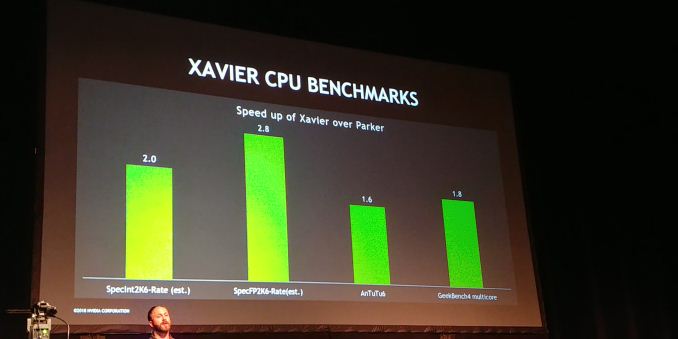
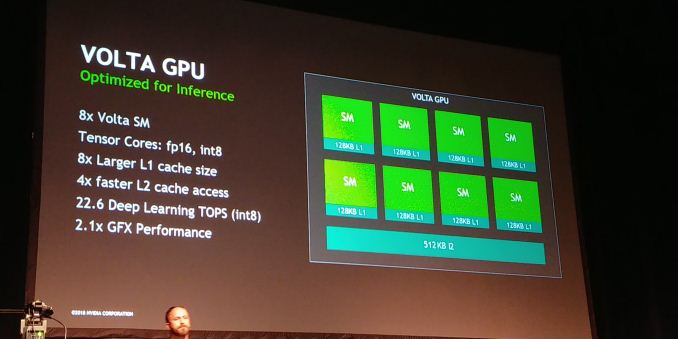
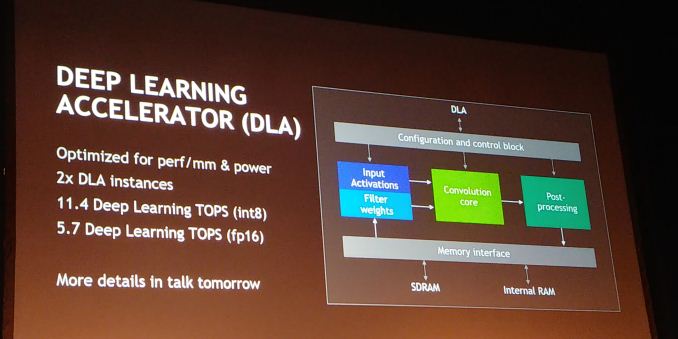
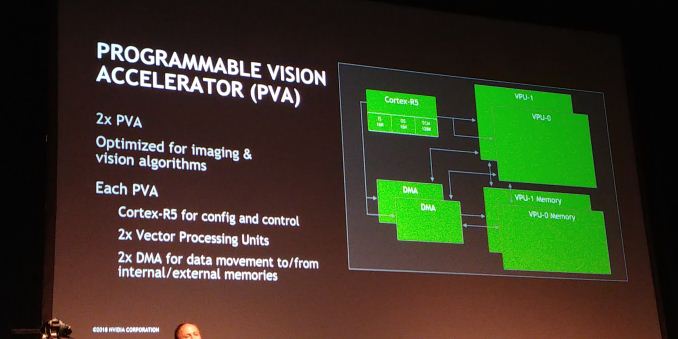
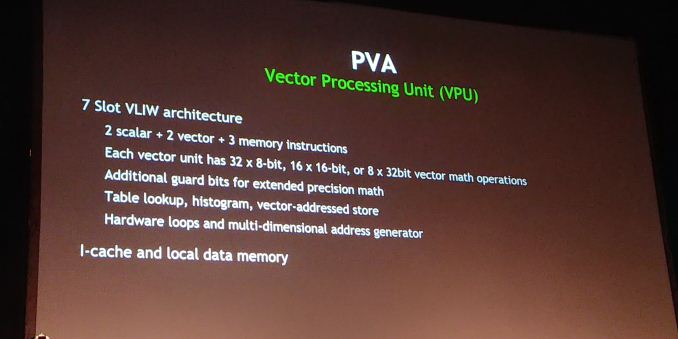
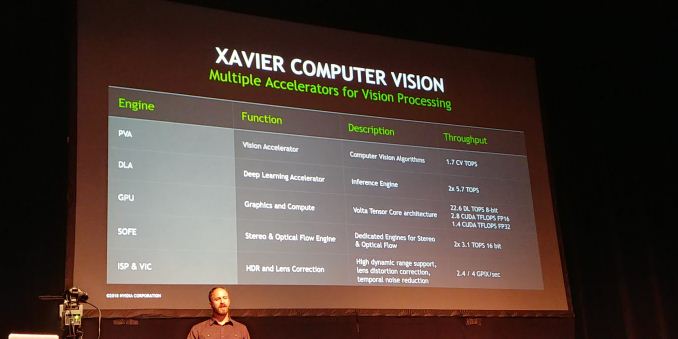
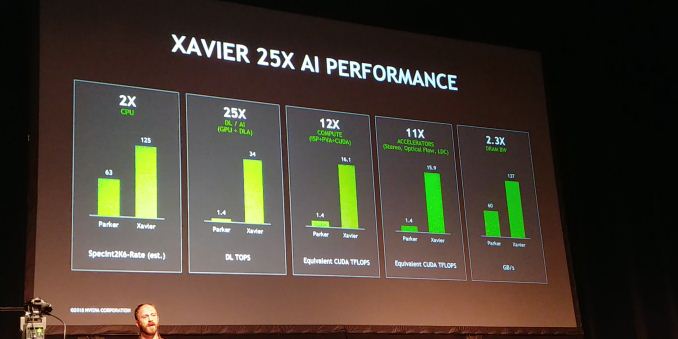
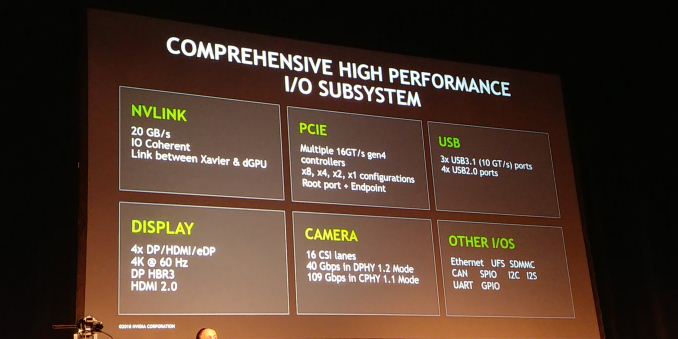
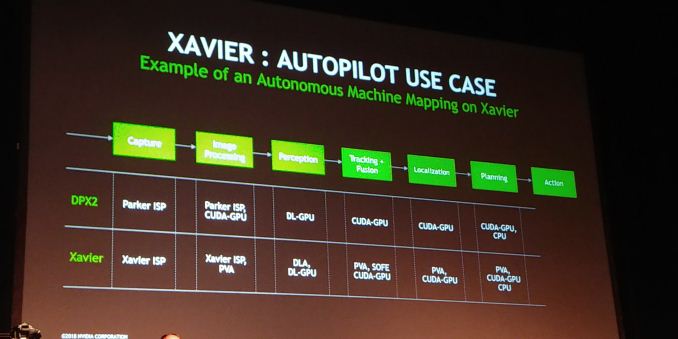
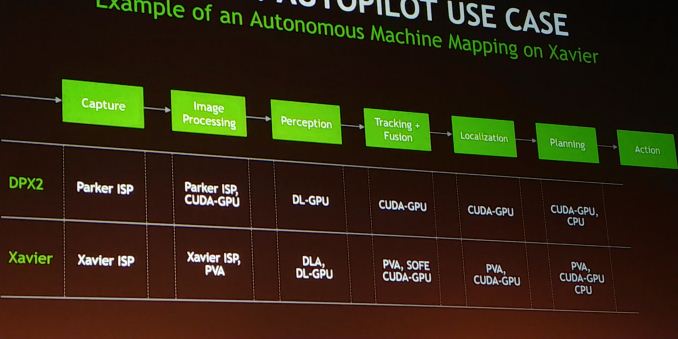
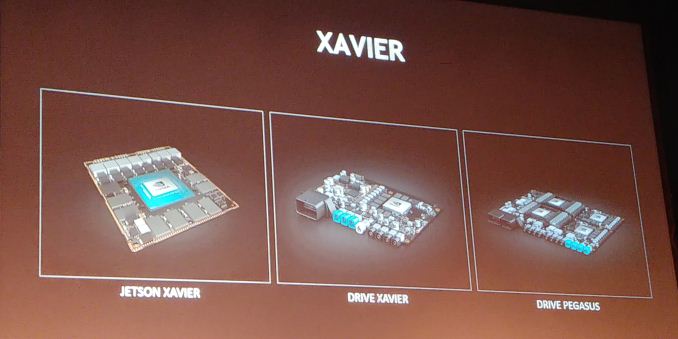








5 Comments
View All Comments
SarahKerrigan - Tuesday, August 21, 2018 - link
Impressive. In a 30-minute presentation, they managed to say almost nothing.I was there for their Pascal HC presentation in 2016, which hit a similar milestone.
MadManMark - Tuesday, August 21, 2018 - link
What specifically were you wanting to know that you did not see?abufrejoval - Friday, August 24, 2018 - link
So how many $$$ would this add to a car's BoM?I guess we won't be seeing these in vacuum robots?
Any figure on TDP?
frenchy_2001 - Friday, August 24, 2018 - link
You can pre-order their Jetson Xavier for $2500 (half if you are a registered dev)https://www.nvidia.com/en-us/autonomous-machines/e...
Those advertise 30W power.
A drive pegasus is 2x Xavier + 2x GPUs, so count ~300W and $5k+.
Santoval - Saturday, August 25, 2018 - link
Drive PX Pegasus actually has a 500W TDP, a frankly insane power draw for any car battery. The surplus power draw is due to the 2 "post-Volta GPUs", presumably based on Turing (GT102 I guess), which are *very* big and power hungry. Due to the Pegasus' TDP being unsuitable for anything but self-driving trucks with huge battery packs, Nvidia appears to target it largely at self-driving development and testing rather than commercial deployment.That will the job of "Pegasus 2" (or however it might be called) which will be based around Orrin, the 7nm fabbed successor of Xavier. Pegasus' successor has a performance target equal to Pegasus but at roughly half the TDP, i.e. at ~250W TDP. Still double that of Tesla's Drive PX 2 unit, but much more palatable.